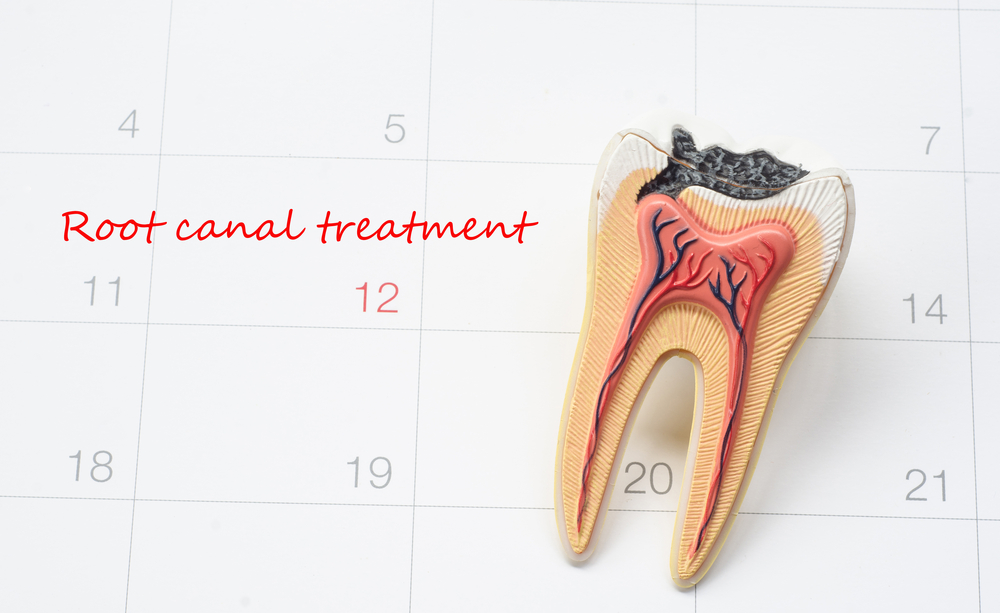
Are you experiencing toothaches or sensitivity to hot and cold drinks? Do you have swelling in your gums? These could be signs that you need a root canal. Root canal treatment is a dental procedure that can save a damaged or infected tooth by removing the pulp inside and replacing it with a filling. In this blog post, we will provide an overview of the root canal procedure, including why it is necessary and how it works. We will also discuss what to expect before and after the procedure, as well as potential risks and complications. Plus, we’ll explore alternatives to root canal treatment and whether a damaged tooth can be left untreated. Learn more about this standard dental procedure and how it can help you maintain good oral health.
The Necessity for a Root Canal
When the dental pulp inside a tooth becomes infected or damaged, a root canal becomes necessary. Without this treatment, the infected tooth can cause severe pain, abscess, and swelling. Root canal treatment allows you to retain your natural tooth and avoid extraction. By removing the infected pulp the procedure eliminates pain and discomfort. It is a crucial step in maintaining the health of your teeth and preventing further complications.
Anesthetic and Initial Preparations
Before the root canal procedure, a dentist will administer local anesthesia to numb the affected tooth and the surrounding gum tissue. To keep the tooth clean and saliva-free during the procedure, a dental dam, a rubber sheet, is used to isolate the tooth. Additionally, dental X-rays may be taken to provide a clear view of the tooth’s root canal structure.
Removing the Pulp: Core of the Procedure
To begin the root canal procedure, the dentist administers local anesthesia to numb the tooth and surrounding gum tissue. Root canal files of increasing sizes are then used to remove the infected pulp from the root canal. Thorough cleaning follows, eliminating bacteria, infected tissue, and debris from the pulp chamber and root canals. Finally, a biocompatible filling material, typically gutta-percha, fills the space inside the tooth.
Temporary Filling and its Purpose
After the root canal procedure, a temporary filling is typically placed to provide a temporary seal until a permanent restoration, such as a crown, can be placed. This temporary filling serves an essential purpose by protecting the tooth and preventing reinfection. It also allows the tooth to heal before the permanent filling or crown is placed. Scheduling a follow-up appointment for the placement of permanent restoration is crucial to ensure the long-term stability and functionality of the tooth.
Dealing with Pain Post-Procedure
After a root canal procedure, it is expected to experience mild discomfort or sensitivity. You can manage this by taking over-the-counter pain medications like ibuprofen. Additionally, applying a cold pack or compress to the affected area can help reduce swelling and numbness, providing temporary relief. However, if the pain persists or worsens, you must contact your dentist. This could indicate complications or the need for further treatment. Remember to follow your dentist’s instructions and attend any follow-up appointments.
Risks and Complications Associated with Root Canal
Potential complications of root canal treatment should be discussed with your dentist. Rarely a root canal procedure can lead to reinfection or inflammation. Risks of root canal treatment may include temporary numbness, swelling, or discomfort. It is essential to follow your dentist’s post-treatment care instructions to minimize complications. Discuss any concerns or questions about the procedure with your dentist beforehand.
How Does a Root Canal Save the Tooth?
During a root canal procedure, the infected pulp is removed, allowing the tooth to be saved. The root canal is then cleaned and filled to prevent reinfection. Saving the natural tooth through a root canal helps maintain proper chewing function and eliminates tooth pain caused by the infection. A crown or dental restoration may be placed to protect the treated tooth.
Crown after Root Canal: Is it Necessary?
After a root canal treatment, a crown is often recommended to protect the treated tooth and restore its strength. It provides an extra layer of protection, reducing the risk of reinfection or complications. Your dentist will evaluate if a crown is necessary for your specific case. Discuss the benefits with your dentist to make an informed decision.
Alternatives to Root Canal Treatment
Sometimes, your dentist may consider tooth extraction instead of root canal therapy. Dental implants can also be a viable alternative, particularly for severely damaged teeth. Your dentist will conduct a thorough evaluation of your dental condition to help you make the best treatment decision. It’s essential to carefully weigh the advantages and disadvantages of each alternative treatment option before making a choice.
Conclusion
In conclusion, a root canal procedure is an effective way to save a damaged tooth and alleviate pain. It involves removing infected pulp, filling the space, and protecting the tooth with a crown. While there may be some discomfort and temporary side effects post-procedure, they can be managed with over-the-counter painkillers and proper oral care. Antibiotics may be prescribed in some instances to prevent infection. However, it is essential to understand that a root canal is not always successful, and there are risks and complications involved. If left untreated, a damaged tooth can lead to further complications and potential tooth loss. Therefore, it is essential to consult with a dentist to determine the best course of action for your dental health.
Contact us today at Park Street Dental for more information!

